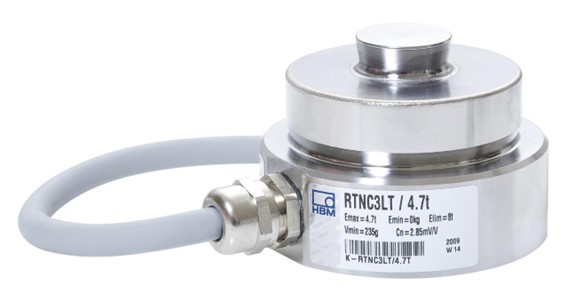Have you ever wondered what makes up a load cell and how it functions?
Load cells are widely used devices crucial in measurement and control systems. These compact and robust sensors are designed to measure force or weight by converting mechanical energy into an electrical signal.
By accurately detecting and quantifying the force applied, load cells find applications in various industries such as manufacturing, aerospace, automotive, and healthcare. This article will delve into online load cells, exploring a comprehensive guide for engineers.
Load cells operate on the principle of strain gauges, tiny sensors that change resistance when subjected to mechanical strain or deformation. When a force is applied to a load cell, it deforms slightly, causing strain gauges attached to it to change their electrical resistance. This change in resistance is directly proportional to the force or weight applied, and it is converted into an electrical signal by a Wheatstone bridge circuit.
Depending on their design, load cells can be categorised into different types, including compression, tension, S-type, shear beam, and bending beam load cells. Each kind is optimised for specific force measurement requirements, ensuring high accuracy and reliability.
Load Cells Demystified: A Comprehensive Guide for Engineers
1. Load Cell 101: The Basics Unveiled
Uncover the fundamental workings of load cells, exploring the principles of strain gauges, Wheatstone bridges, and how they convert mechanical force into electrical signals. Lay the foundation for your load cell mastery!
2. Types of Load Cells: An Array of Options
Discover the diverse world of load cells, from compression and tension load cells to bending beam and shear beam designs. Explore the pros and cons of each type, enabling you to select the perfect load cell for your application.
3. Understanding Load Cell Accuracy: The Quest for Precision
Delve into the intricacies of load cell accuracy, learning about linearity, hysteresis, and repeatability. Unmask the secrets behind calibration and ensure precise measurements every time.
4. Overload Protection: Safeguarding Your Load Cells
Discover ingenious ways to protect your load cells from accidental overloading. Explore the importance of load cell capacity, overload limits, and safety mechanisms that keep your equipment intact.
5. Load Cell Mounting: A Solid Foundation
Uncover the art of proper load cell installation, from considerations like alignment and levelling to avoiding mechanical interferences. Learn the tricks to achieve accurate measurements and extend the life of your load cells.
6. Load Cell Output: Analog vs. Digital
Enter the digital realm and explore the advantages of digital load cell systems, including enhanced accuracy, noise immunity, and simplified signal processing. Weigh the pros and cons to make informed decisions.
7. Load Cell Signal Conditioning: From Raw Data to Actionable Insights
Decode the mysteries of signal conditioning, where amplification, filtering, and digitisation take place. Understand how these processes enhance the load cell’s output and optimise its performance.
8. Load Cell Calibration: The Art of Precision
Master the essential skill of load cell calibration. Discover calibration techniques, such as deadweight calibration, traceability standards, and the importance of certified calibration equipment.
9. Load Cell Testing: Pushing Boundaries
Unleash the power of load cell testing! Explore methods like a creep, fatigue, and environmental testing to ensure load cell reliability under various conditions. Prepare your load cells for the toughest challenges.
10. Load Cell Interface: Connecting with Precision
Learn about the various interfaces that connect load cells, such as analog voltage, current loops, and digital protocols like USB and Ethernet. Discover how to choose the correct interface for seamless integration with your systems.
Click here – Learn More About The Steps To Getting A Mental Health Coach Certification
11. Load Cell Amplifiers: Boosting Signal Strength
Demystify load cell amplifiers and explore their role in signal conditioning. Understand amplifier specifications, noise considerations, and gain adjustment to optimise your load cell’s performance.
12. Load Cell Applications: Beyond the Basics
Unleash your creativity and discover the wide range of load cell applications, from industrial weighing systems and force measurement to automotive and aerospace engineering. Witness the power of load cells in action.
13. Load Cell Selection: Finding the Perfect Match
Navigate the sea of load cell options and select the ideal load cell for your application. Understand critical factors like capacity, sensitivity, and environmental considerations to ensure the perfect match.
14. Load Cell Maintenance: Longevity and Reliability
Discover the secrets of load cell maintenance to extend their lifespan and maintain accurate measurements. Explore cleaning methods, protection against environmental factors, and routine inspection practices.
15. Load Cell Integration: Seamless System Integration
Unleash the power of load cell integration into complex systems. Learn about compatibility considerations, communication protocols, and data acquisition methods to achieve seamless integration and harness the full potential of your load cells.
Armed with these 15 comprehensive insights, you now possess the tools and knowledge to excel in the world of load cells. From the basics to advanced techniques, you are well-equipped to tackle any load cell-related challenge that comes your way. So go forth, apply your newfound expertise, and unlock the true potential of load cells in your engineering endeavours.
To ensure quality and reliability, contact Meltrons Australia for top-notch load cells!

